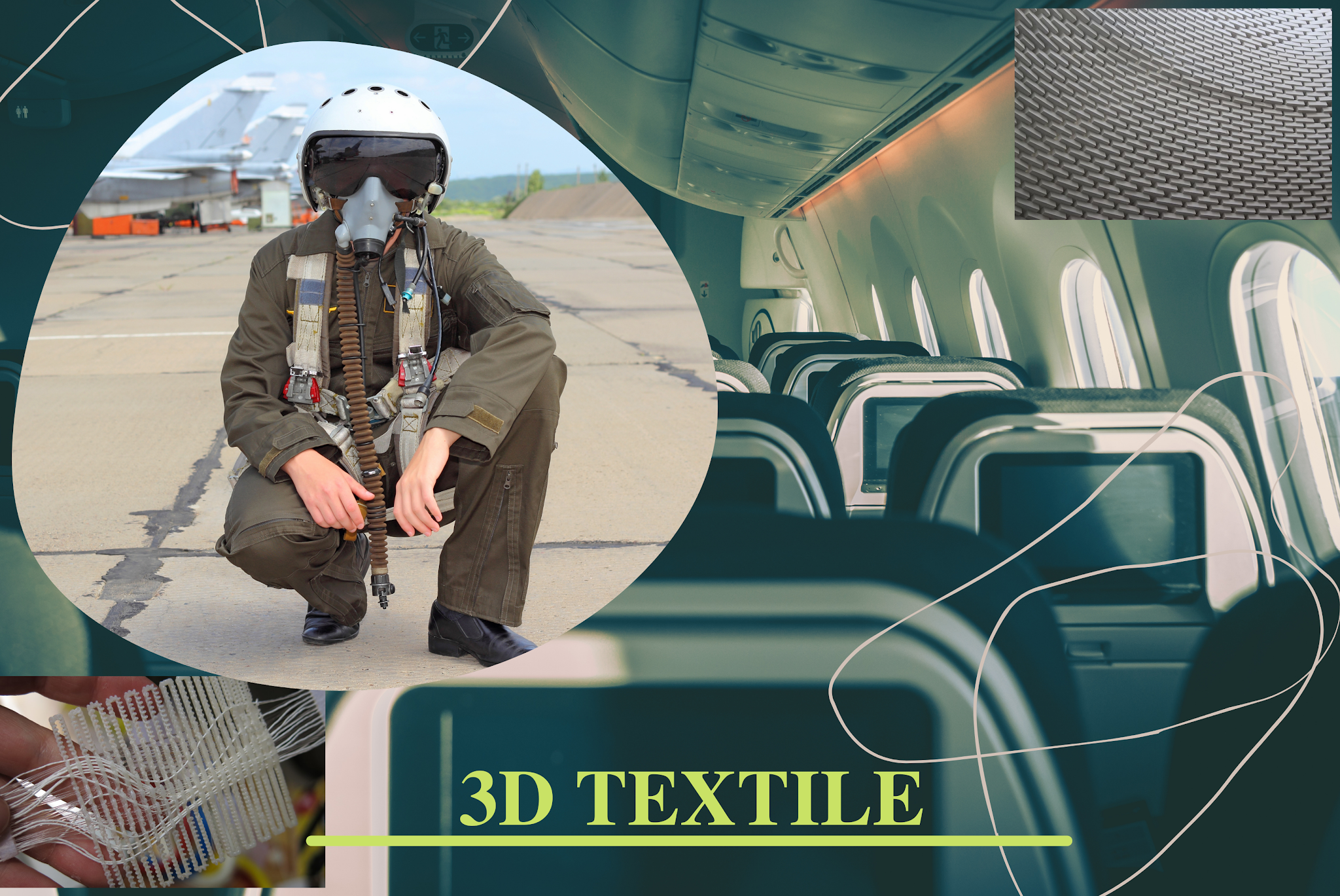Introduction:
The constituent yarns which are supposedly disposed of in a three mutually perpendicular plane relationship, when a single layer material has an overall shape or a solid planer material have multiple layers, or a solid multilayer material has a 3D shape can be defined as 3D Textile. The ultimate uses of 3D fabrics rely upon the interaction used to produce them.
3D fabrics have been utilized in specialized textiles for quite a while. They are striking nonwovens as well as can possibly change the design of planes, building models, and clinical textiles. The advancement of 3D material composites has been driven by the need for diminishing creation costs, expanding through-thickness mechanical properties, and improving impact damage tolerance. The advancement of 3D material composites has been undertaken largely to a great extent by NASA. Moreover, the marine, development, and car businesses have upheld the advancement of 3D composites. 3D material composites containing three-dimensional material preforms have the accompanying attributes: improved solidness and strength in the thickness bearing, end of the interlaminar surfaces because of incorporated construction, possibilities of near-net-shape design, and manufacturing.
Weaving:
The weaving cycle includes the inclusion of nominally straight weft yarns between layers of warp. 3D woven textiles need a double directional shedding framework. The warps lie corresponding to the course of the weaving interaction assigned to the x-axis. The weft yarns are arranged symmetrically to the warp yarns and corresponding to the y-axis. Except for a little out-of-plane waviness, the warp and weft yarns lie absolutely in the x-y plane without interlacing each-other also to a 0/90 laminate. In 3D weaving, a little extent of in-plane yarns is woven that they tie together the different layers of warp and weft yarns. These yarns are named ‘z binders’; since they are woven through the thickness of the preform, assigned the z-axis. The design of the weave is confounded than customary weaving. 3D woven preforms can be produced by utilizing the most widely recognized kinds of business weaving looms. Jacquard looms are the most mainstream because of their high levels of automation and great control of the fiber structures. The advantages of this automation in the weaving interaction are decreasing the manufacturing costs as opposed to lessening the work hours, scrap rates, measure assessments, and thusly, expanding repeatability and quality control. The loom can be utilized to produce incorporated, net-shape performs, for example, blade stiffened panels.
Stitching:
There has been extensive interest in composites delivered by stitching layers of textile fabric and consequently impregnating the preform with resin by utilizing a liquid molding technique. The stitching cycle is completed utilizing mechanical stitching machines. Stitching machines can line different sorts of performs with superior yarns as stitching strings. The degree of through-thickness support in sewed composites structures is between 1 to 5%, which is an equivalent measure of support in 3D woven, braided, and knitted composites.
Previously, 3D garments were made by stitching two layers of fabric in interlocked 3D circles. As per the necessities, sorts are removed and sewn. Expound stitching is sewn into the base fabric for improving weaving. The base design is broken up away when an unattached 3D construction is made.
3D Braids:
Braids are unpredictable designs where single layers of yarns are diagonally interlaced. The development of the packages around one another is finished by ‘Horn gears.’ There is a restriction on utilizing horn gear. The solid braiding process can not achieve versatility.
Four-venture plaiting can take care of the issue by controlling the development of carriages with the assistance of a computer. Despite the fact that twisting gives a ton of versatility, it has a few impediments as well. If the size of the product is large, the development of bundles around each other turns out to be moderate. Likewise, huge, interlacing machines are essential. In the braiding process, several carriers move spools in the roundabout way with the end goal that the finish of yarns is fixed on a mandrel and intertwine. 3D interlacing interaction can be utilized for producing near-net-shape preforms.
This process can be applied to manufacture airframe spars, F-section fuselage frames, rib stiffened panels, rocket nose cones, fuselage barrels, tail shafts, and rocket engine nozzles.
3D Knit Structures:
Knitting is utilized in the creation of garments. It has got consideration from preform manufacturers for producing complex 3D constructions. The sewed fiber design results in high flexibility, anyway the significant disadvantage of this interaction is fiber breakages happened during the assembling of preform specifically for carbon fibers. Another serious issue around the sewed fortifications is the loop structure makes local stress concentrations, so their mechanical properties are by and large lower than alternative techniques.
Complex integral shapes are conceivable by the computer controlling weft knitting machines. This interaction is utilized in making total garments without sewing various pieces of the garments separately. Mechanical execution in weft weaving is slow as the yarns repeatedly change direction over short periods. Spacer fabric is another kind of 3D weave. Strings going between two knit layers connect them. In twist weaving, multi-axial structures can be created. The design is held together by knitted binder yarns.
Uses of 3D Textiles:
The 3D materials are used for both functional and aesthetic purposes. Its application goes from shorts shoes to helicopter blades. Let’s take a look at some of the most articulated zones of 3D textile applications –
1.Aerospace, Automobile, and Military application: Gas turbine fan blades, stingers, Helicopter rotor blades, Military vehicle protection, etc.
2.Sport and Leisure application: Sport shoes, underwear, outwear, golf-club, etc.
3.Medical application: Double velour vascular graft, scaffolds, wound dressing, tissue engineering, ulcer management, etc.
4.Protection application: Soft body armor, helmets, limb protectors, protective panels in vehicles, etc.
5.Filtration: Gas and liquid filtration.
6.Papermaking: Supporting the paper during hot air supply.
7.Geotextile: Separation and filtration purpose.
8.Construction: Temporary bridges, floorboard, protective side panels, main framework, and cladding of buildings.
REFERENCE
TextiletutsInternational Journal of Aviation, Aeronautics, and Aerospace.
Written By:
Rahat Mostafa
NITER 10th Batch
Department of Textile Engineering



Informative.keep it up